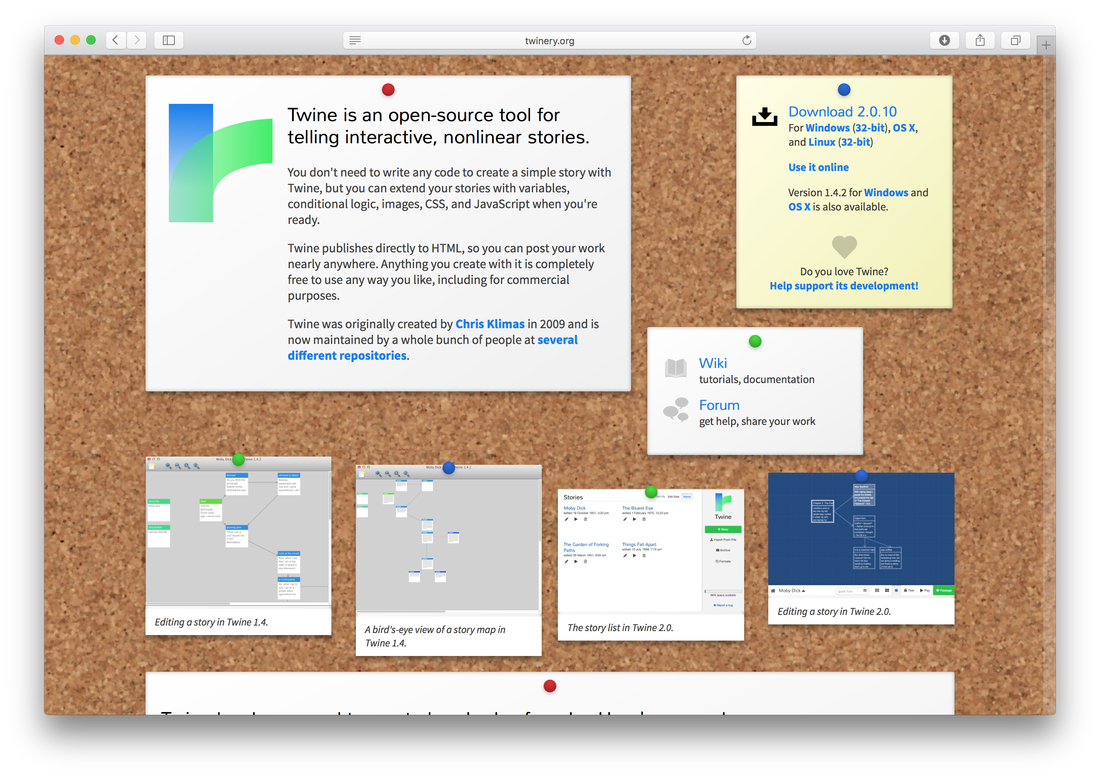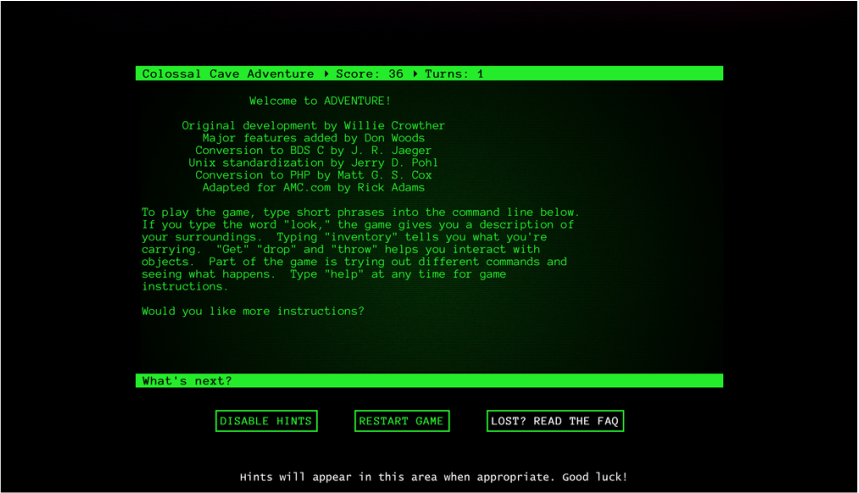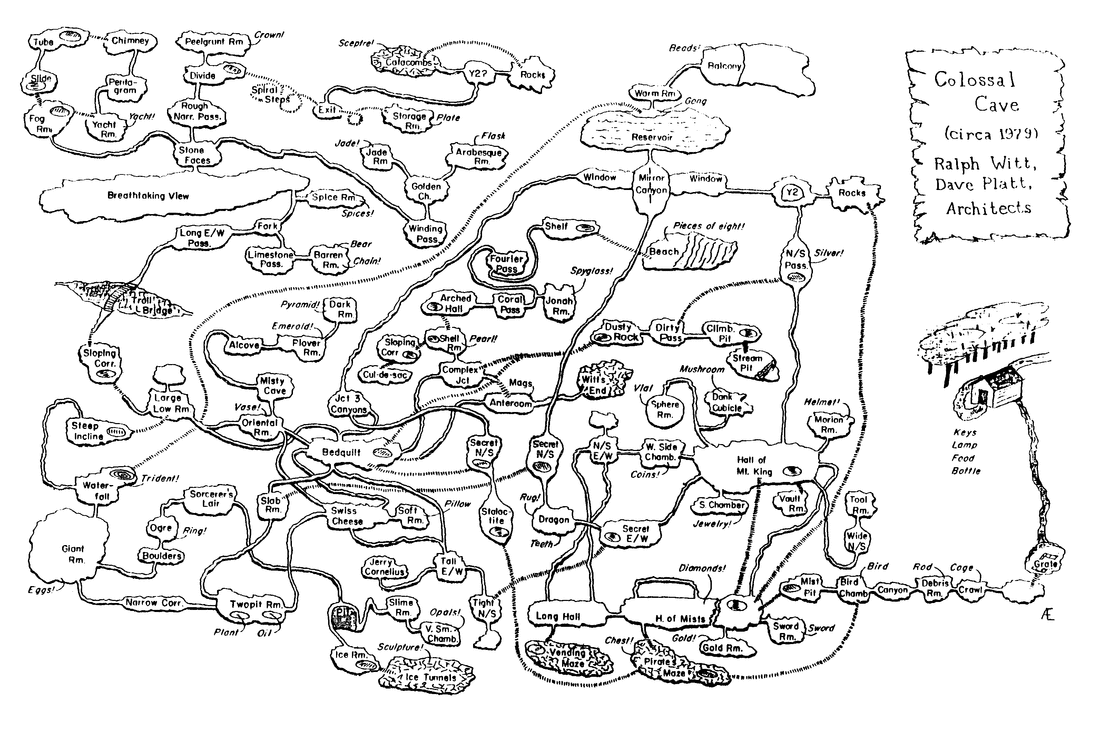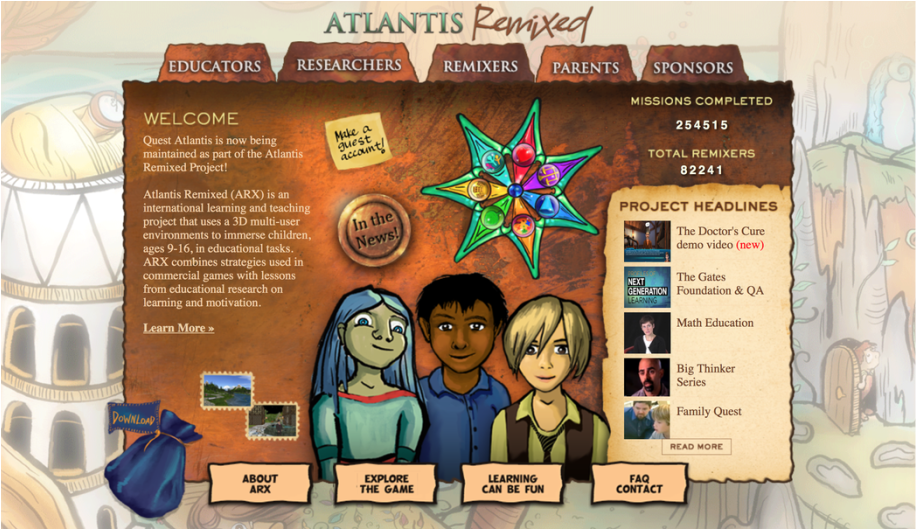|
11/20/2015 0 Comments Software for Future Development: TwineAs I went on with my search to know more about the trending non-linear story telling game Lifeline, I discovered that it's complicated storyline (which is shown in a picture in the previous post) is being managed by a software called Twine.
Twine is an open-source tool for telling interactive, nonlinear stories. You don't need to write any code to create a simple story with Twine, but you can extend your stories with variables, conditional logic, images, CSS, and JavaScript when you're ready. In other words, it can be as simple as a clickable prototype, or, if necessary, be expanded into a visually decorated and animated piece of work. Could be exciting. This is their official website. BTW, their software is open source and completely free.
0 Comments
11/18/2015 0 Comments Another Landscape AuditLearning about the difficulty I could run into in the future on developing my own 3D role-playing game, I have decided to take a look at another game genre. After all, writing code and tweaking on minor application bugs is not the nature of design, and I do not want my thesis to be just another design document. The genre of my choice is very different from what I've been looking at for the past few weeks - text based adventure games. The reason behind this choice is that while text games may lack visual stimulations for the players, they do provide more room for interpretation and imagination. Furthermore, it allow the players to less distracted by the graphics and more focused on the choices. The following are some of the games I tried out recently. The Colossal Cave Adventure Colossal Cave Adventure (also known as ADVENT, Colossal Cave, or Adventure) is one of the earliest computer adventure games and a precursor form of role playing video game. The original version was designed by Will Crowther, a programmer and caving enthusiast who based the layout on part of the Mammoth Cave system in Kentucky. (from https://en.wikipedia.org/wiki/Colossal_Cave_Adventure) Being probably the oldest computer games in the world, this games still attracts a wide range of demographic. People are fascinated by the world it presents, along with the non-linear map ( going north from one room to another does not necessarily mean you can go back where you came from by going south) and almost endless mazes. With all the details being reduce to zero, players can better appreciate the core elements of the game and make the experience more memorable. Click here to play the game yourself.
11/5/2015 0 Comments Landscape AuditQuest Atlantis The Atlantis Remixed (ARX) Project (former Quest Atlantis) is an international learning and teaching project that uses 3D multi-user environments to immerse children, ages 9-16, in educational tasks. Emerging from a decade of research with Quest Atlantis, the ARX Project now combines strategies used in commercial games with lessons from educational research on learning and motivation. The Atlantis Remixed Project allows students to travel to virtual places to play educational adventures, talk with other users and mentors, build virtual personae, and eventually create their own games. This project is intended to engage children ages 9–16 in a form of transformational play comprising of both online and off-line learning activities, with a storyline inspiring a disposition towards social action. The Atlantis Remixed Project and Quest Atlantis provide students entire worlds in which they are central, important participants; places where their actions have significant impact on the world, and places in which what one knows is directly related to what they are able to do and, ultimately, who they can become. Explore our site and learn more about this exciting project. (from http://atlantisremixed.org/#44) I read about the the game first in a paper of . In the paper, the researcher described the design rationale and the basic functions of the game. It has almost everything I could have wanted for my project: a first person RPG game, a 3D gaming environment, an educational purpose, and a choice based game mechanism. The purpose of the game is different, though. As shown in the video below, it is being used to teach students how to construct elements (thesis, supporting arguments, evidences) into an argumentation paper. It could be a good future reference for my own design. The game can be found here. While the game is not free, one can ask for permission to play it under the name of educational research. Click here for more information. Fable III Fable III is the third video game in the Fable series of action role-playing open world video games. The game was published by Microsoft Game Studios and developed by Lionhead Studios for the Xbox 360 and Microsoft Windows. The story focuses on the player character's struggle to overthrow the King of Albion by forming alliances and building support for a revolution. After a successful revolt, the player becomes the monarch and is tasked with attempting to defend Albion from a great evil. The game includes voice acting by Ben Kingsley, Stephen Fry, Simon Pegg, Naomie Harris, Michael Fassbender, Zoë Wanamaker, Bernard Hill, Nicholas Hoult and John Cleese.The game was released on 29 October 2010. (from https://en.wikipedia.org/wiki/Fable_III) While this game is not about education, it does base its game mechanism on choices on almost any issue the character, the consequence of witch will be gradually reflected on the character's popularity and appearance. Furthermore, it is also one of the most popular role playing game ever publish on Xbox. It's first person view combined with unlimited choices really provided its players something to be addicted to. |
AuthorWrite something about yourself. No need to be fancy, just an overview. Archives
May 2016
Categories |






 RSS Feed
RSS Feed